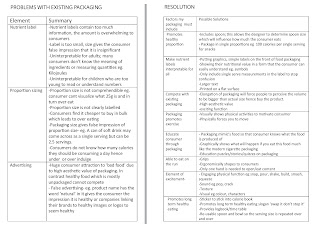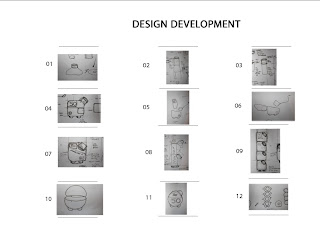Thursday 7 June 2012
Saturday 2 June 2012
Street Furniture
Rational
My
chair design will encourage families to use the park. It will increase the
amount of people utilising the site and in turn increase the natural
surveillance of the site enough to inhibit detrimental behaviour. My design will draw this target group in
through its changeable form that can be used by the family in different
scenarios eg used for resting/playing/eating.
The
four chairs can be arranged together in an arc for sitting and chatting with
friends and family. If multiples of these chairs are located in the same area
they can be pushed together; the repetition of four of this chair creating a
full circle of seating. This arrangement is ideal for larger communicating
groups eg including mothers groups, school groups. The individual chairs
that make up the four seater design, can be flipped over to create
individual/separate seating. These seats angle off various points of the arc,
allowing the user to position them to look at a desired part of the park. This
would be ideal for an individual mother watching her children playing on the
grass. The
designs modular tendencies which allow the user to alter the designs form,
creates user-product interaction which enhances the users’ experience and
allows them to create a connection with the product. This interaction will
continually draw users back to the park.
The organic shape of the chair mimics the human shape to enhance
comfortableness. This organic form will also allow the structure to reflect the
natural environment, creating a harmonious landscape. The rounded corners also
mimic the swinging motion that occurs when changing the form of the chair this
links the chairs function and aesthetics to create a harmonious design. The sheet
aluminium will not be coated, but will have a polished finish. This material
was chosen due to its recyclability and low energy use. A repetition of cut out holes, patterns the
materials surface, this not only cuts down on material usage but is not as
attractive to graffiti artists. And in the case that the chair is littered with
graffiti it will be not as recognisable allowing the environments aesthetics to
be uninterrupted.
My designs physical elements will
make people feel welcome and comfortable and enhance cleanliness and safety;
these conditions will allow the park to a secure an attractive image for
“place” in the community.
Monday 14 May 2012
Sunday 13 May 2012
Sunday 22 April 2012
Video Blog Review C
The Light Bulb Conspiracy
Cosima Dannoritzer’s documentary ‘The light bulb conspiracy’
portrays how planned obsolescence began and its effect on modern society. It is
an educational documentary that should be watch by all so that we can make conscious
decisions and fight against planned obsolescence.
Planned obsolescence is the deliberate shortening of a
products life span to guarantee consumer demand. The growth of Modern society now
relies on the accelerating cycle of production, consumption and throwing away
which is the result of planned obsolescence.
Created by sir Humphrey Davy’s the light bulb was a symbol
of innovation however it was the first official victim of planned obsolescence
as a result of the Phebus Cartel set up in 1924. This set up deliberately limited
the life of the single light bulb to 1000 hours by preventing technological
development; this increased consumer demand and in turn company profits. The documentary
shows the pre-cartel light bulb in the Livermore Firehouse, California is still
functioning after a century.
When the US economy crashed and the depression was at its
peak in the late 20’s Bernard London put forth the radical idea of making
planned obsolescence a legal legislation, although this was ignored and never
put into practice. Planned obsolescence however flourished in the 1950s with
the birth of the consumer society; explained Brook Stevens; ‘planned obsolescence the desire to own
something a little newer, a little better, a little sooner than necessary...’
society was seduced by new designs and effective marketing techniques. Some
companies went against this new concept for example depont created the ideal
nylon stockings which had a increased life, however they were forced ‘back to
the drawing board’ to make fibres weaker when high profits were not being made.
In contrast at this time such countries as Germany did not follow this concept;
with their post war lack of resources they saw no use for the production of products
with shorter lives.
Planned obsolescence has a high impact on the environment
including; the continuous use of materials is having a great impact on our non renewable
resource supple, the increasing carbon output that results from continuous manufacturing
and the dumping of non biodegradable wastes.
The dumping of wastes has increasingly occurred in 3rd world countries
which is causing devastation to not only the natural environment but causing
disease epidemics.
Planned obsolescence is still well and alive in the modern
society for example printers are embedded with chips and cause failure and
apple ipods have a specific battery which has a shorter life. However people in
the past did not have the power to change the rapidly growing concept however
with the presence of advanced communication systems in modern society eg
internet it is easy for our society to cause change.
Subscribe to:
Posts (Atom)














